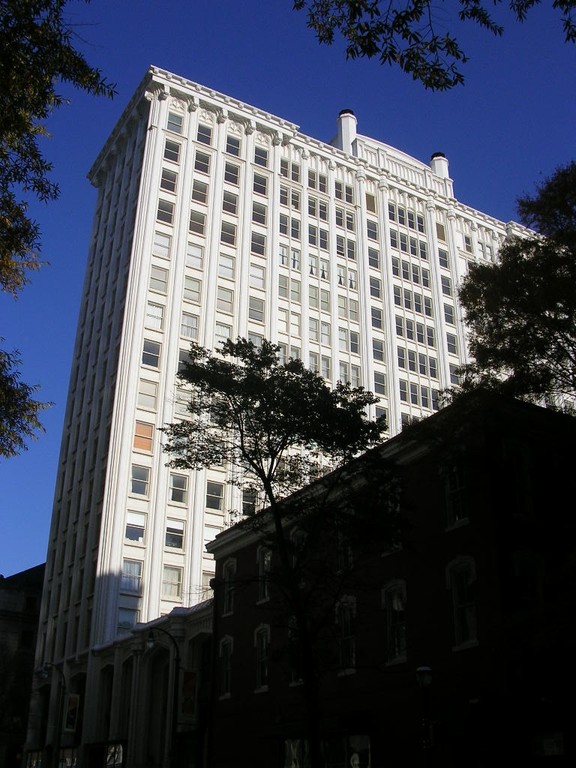Healey Building
Introduction
Text-to-speech Audio
Images
Healey Building (1914) in Atlanta. Photo taken in 2007.

Backstory and Context
Text-to-speech Audio
The 1914-built Healey Building stands as the final skyscraper from the Atlanta firm of Morgan and Dillon before the first World War. However, evidence points to the fact that W. T. Downing, a renowned Atlanta architect who served as an associated architect on the project, likely designed the building. The design also initially intended for there to be a second, twin tower.
World War I and the death of builder, William T. Healey, in 1920 prevented the twin-tower design from coming to fruition. The two towers were to be joined by a low, connecting element containing a top-lighted rotunda. In place of a second tower stands a row of small structures intended for commercial and retail use. The Healy tower comprises of clustered piers that rise throughout the building's sixteen-story high exterior and provide the structure with its striking verticality. Meanwhile, the New-Gothic style gives the building lightness and clean lines, both on the interior and exterior.
The financier of the building, Thomas G. Healey, started his working life in the brick-making business, before transitioning to a builder and contractor. He took those lessons and used it to make his fortune as a real estate developer. But, he also delved into the banking industry and proved to be a successful street railway entrepreneur. Lastly, he served as a city politician. His son, William, worked beside his father for many years before finally taking over the family business. William ultimately served as the builder of the Healy building before his death a few years after the completion of the tower. The building remained in the Healey family until 1972.
A 1988 renovation followed by another one in 2001 included the conversion of the upper 14 floors to condominiums while the lower two stories serve galleries, professional offices, shops, and restaurants.
Sources
Dunagan, H. Lee. "Nomination Form: Healey Building." National Register of Historic Places. nps.gov. August 12, 1977. https://npgallery.nps.gov/GetAsset/5b5edb3d-e001-4f7b-8c14-a60fdbaaad2a
Garrett, Franklin M. Atlanta and Environs: A Chronicle of Its People and Events, 1820s-1870s. Vol. 1. Athens: University of Georgia Press, 1969.
"Healey Building." City of Atlanta City Planning, Historic Preservation. atlantaga.gov . Accessed March 14, 2020. https://www.atlantaga.gov/government/departments/city-planning/office-of-design/urban-design-commission/healey-building
Harley F Etienne, Harley F and Barbara Faga, eds. Planning Atlanta. New York: Routledge, 2017.
